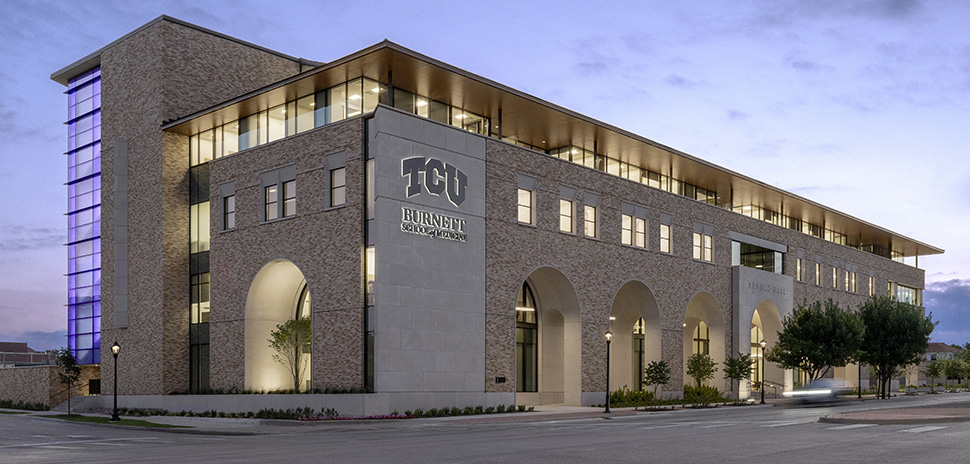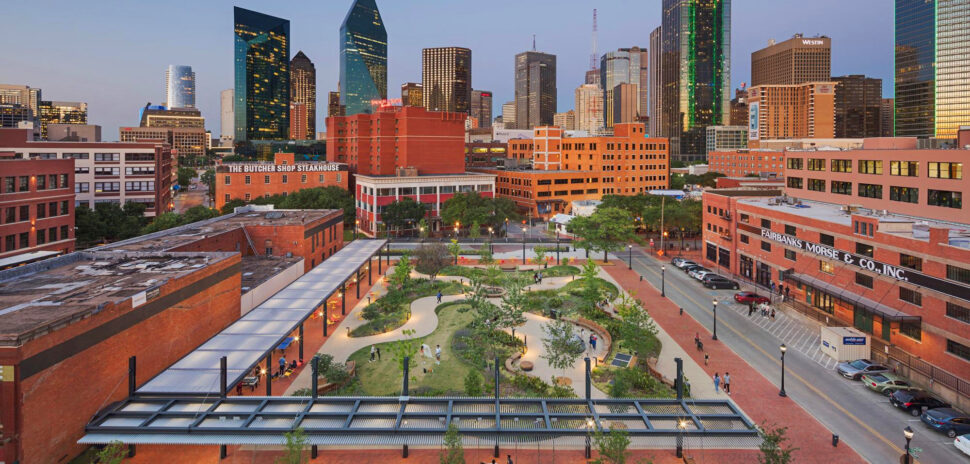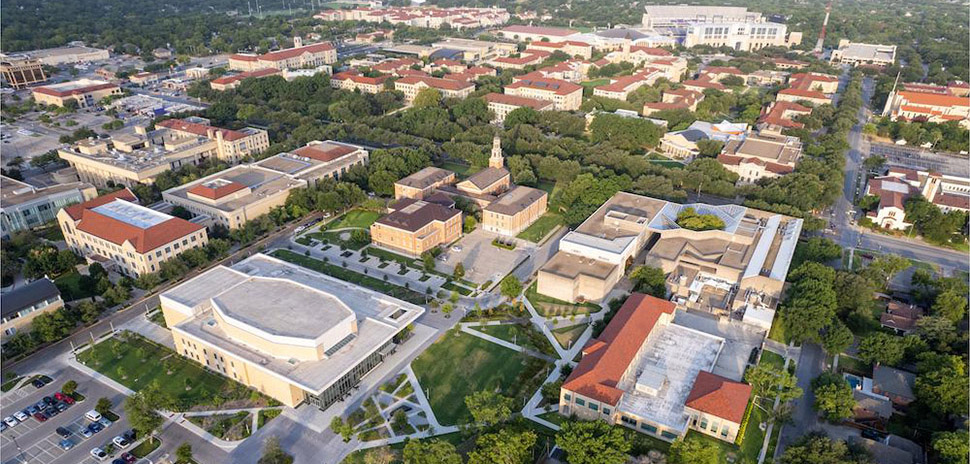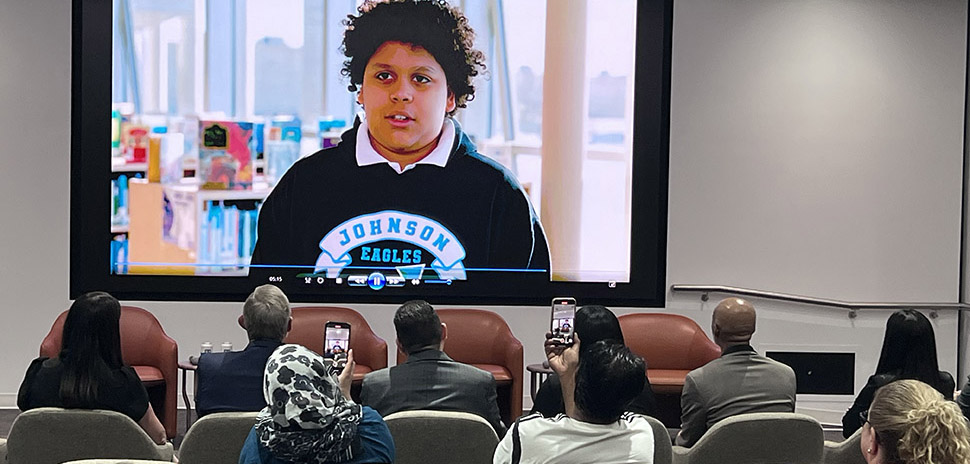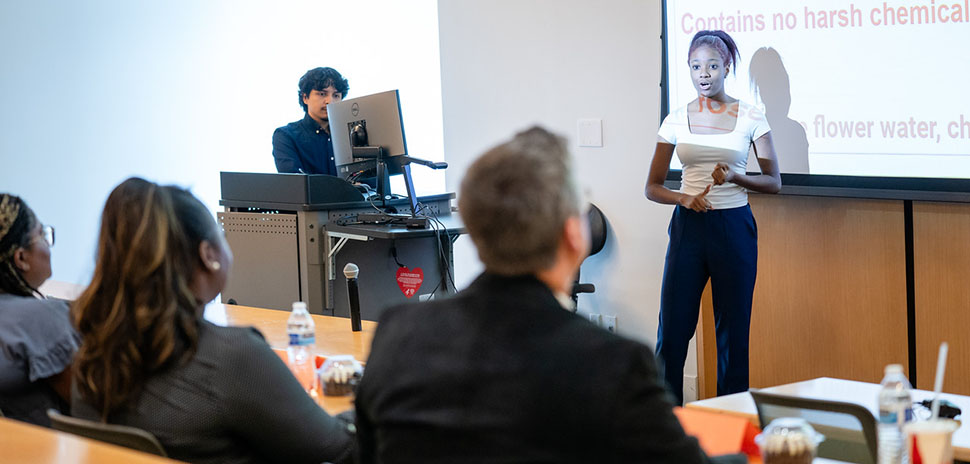Architect partners CO Architects and Hoefer Welker have marked the official project completion of Texas Christian University’s Arnold Hall, home to the Anne Burnett Marion School of Medicine.
The new 95,000-square-foot, four-story building at 1100 W. Rosedale St. was built by Linbeck, which has offices in Fort Worth, Houston, and Austin. It will serve as the academic hub for 240 medical students annually and nearly 150 faculty and staff, as well as clinicians and staff from affiliated hospitals.
The news follows last month’s update about TCU’s “Campus Master Plan,” which remains on track to hit key milestones this coming January.
Stuart D. Flynn, M.D., founding dean of the Burnett School of Medicine, said the new medical school “will be a significant contributor to Fort Worth’s economy and growth as a city where medical innovation happens. We love the proximity to all of our clinical partners in the Near Southside Medical Innovation District and look forward to deepening those connections.”
“Arnold Hall is more than the new home for the Burnett School of Medicine,” he added in a statement. “It also communicates TCU’s commitment to creating dynamic state-of-the-art facilities for next-generation medical education, where students now have access to cutting-edge technology and facilities that will pair with a curriculum that balances wellness, knowledge and the growth of students.”
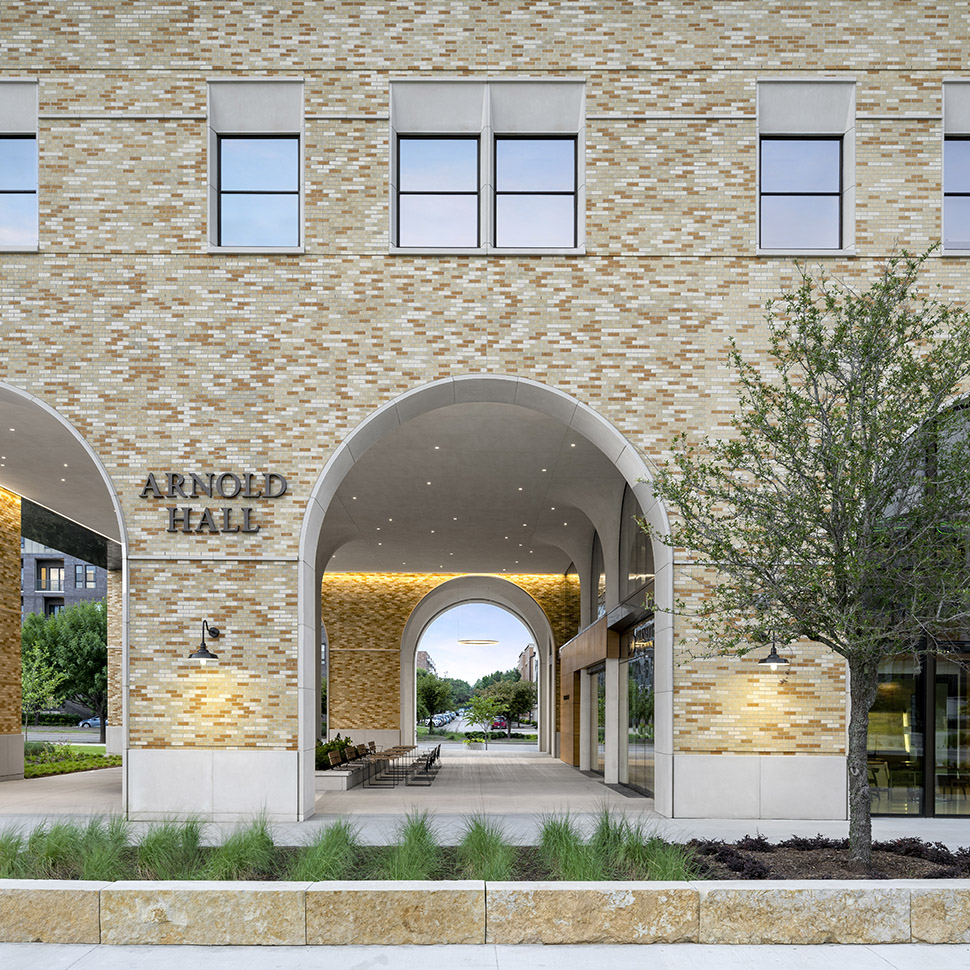
TCU’s recently completed medical school building Arnold Hall [Photo: Wade Griffith]
A ‘medical simulation’ suite and experimental labs with AR and VR tech
Arnold Hall has been designed to promote collaborative learning and to support interactive, experiential training opportunities, the project team said. On the third floor, anatomy and experimental labs support the use of the latest augmented and virtual reality technologies. The building also features a commons area, library, classrooms, and faculty offices and suites.
A medical simulation suite will enable students to interact with lifelike human manikins for the practice of complex team-based care. A clinical skills room will be a setting for the learnaing of empathetic communication and diagnostic skills with “patient-actors.”
TCU says its curriculum enables students to work with physicians on their first day of medical school “to identify the major drivers in the future of medicine, including artificial intelligence, genomics, and technology monitoring patient health and disease.”
Aiming to be part of a growing bioscience sector
Arnold Hall has risen as a signpost of future development for TCU’s downtown Fort Worth location. The project team said it collaborated with the city of Fort Worth to select and establish the location near urban medical districts and the city’s historic Near Southside in an effort to be part of a growing bioscience sector.
“We designed the medical school building with a clear vision of cultivating the next generation of healthcare leaders within an inclusive and forward-thinking environment,” Travis Leissner, principal and director of strategy at Hoefer Welker, said in a statement. “We’re proud to say that we executed this by creating a space that will foster world-class education utilizing innovative technology and collaborative spaces where medical students will establish the foundation for their careers. The work curated alongside our project partners and the university will undoubtedly make a significant impact on students, faculty professionals, the greater community of Fort Worth, and beyond.”
Jonathan Kanda, FAIA, principal at CO Architects, said the new building’s goal “was to create a new home for the School of Medicine that’s capable of accommodating future technological and pedagogical advances in medical education.”
CO Architects design principal Arnold Swanborn noted that a key feature of the building is its integration of TCU’s “architectural brand—founded on the use of brick walls, arches and sloped tile roofs” into Fort Worth’s Near Southside district.
![]()
Get on the list.
Dallas Innovates, every day.
Sign up to keep your eye on what’s new and next in Dallas-Fort Worth, every day.

